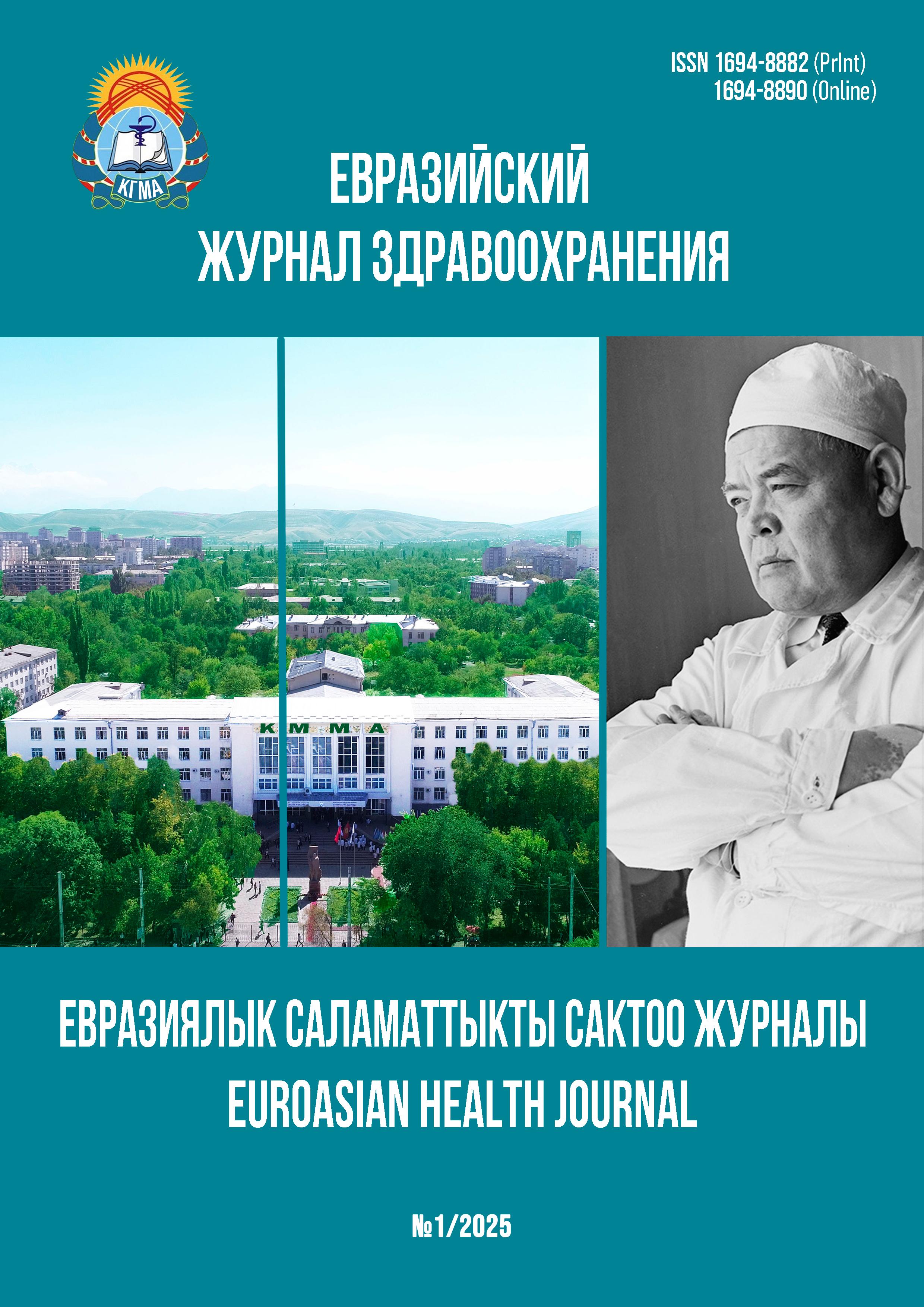CLINICAL AND RADIOLOGICAL CHARACTERISTICS OF SILICOSIS IN WORKERS MINING INDUSTRY IN KYRGYZSTAN
DOI:
https://doi.org/10.54890/1694-8882-2025-1-103Abstract
Currently, the mining industry in Kyrgyzstan is reviving and developing. Mainly gold deposits are being developed. Therefore, the problem of silicosis is becoming particularly relevant again.
The purpose: to study the forms of silicosis in the gold mining industry.
Materials and methotds: the article presents an analysis of the results of clinical and radiological examination of 35 patients with silicosis who worked in underground conditions.
The results obtained: the patients were examined in the department of the National Hospital, because changes in the lungs were found during periodic medical examination. The occupational history of all workers was analyzed, as well as a document including the results of hygienic measurements taken at the workplace, conducted by specialists of the Territorial Department of Sanitary and Epidemiological Supervision. The assessment of the clinical presentation of the individuals was carried out. Radiographic abnormalities in the chest provoked by the inhalation of dusts have been studied. Changes in the blood were also analyzed. The study conducted has shown the prevalence of progressive, complicated forms of silicosis in gold mine workers at the present time in Kyrgyzstan.
Conclusion: based on the analysis, the necessity of developing hygienic and medical measures to prevent the development of this disease is justified.
Keywords:
silicosis, small rounded opacities, large opacities, tuberculosis, rheumatoid pneumoconiosis, preventionReferences
1. Измеров Н.Ф., Монаенкова А.М. Введение. В кн.: Измеров Н.Ф., ред. Руководство по профессиональным заболеваниям. Том 1. М.:Медицина; 1983:5-11.
2. Бабанов С.А., Стрижаков Л.А., Лебедева М.В., Фомин В.В., Будаш Д.С., Байкоа А.Г. Пневмокониозы: современные взгляды. Терапевтический архив. 2019;91(3):107-113. https://doi.org/10.26442/00403660.2019.03.000066
3. Васильева О.С., Кравченко Н.Ю. Пневмокониоз в практике лечащего врача. CONSILIUM MEDICUM. 2016;18(11):39-45.
4. Hua JT, Zell-Baran L, Go LHT, Kramer MR, Van Bree JB, Chambers D, Deller D, et al. Demographic, exposure and clinical characterisics in a multinational registry of engineered stone workers with silicosis. Occup. Environ. Med. 2022;79(9):586-593. https://doi.org/10.1136/oemed-2021-108190
5. Hoy RF, Jeebhay MF, Cavalin C, Chen W, Cohen RA, Fireman E, Go LHT, León-Jiménez A, et al. Current global perspectives on silicosis – Convergence of old and newly emergent hazards. Respirology. 2022;27(6): 387–398. https://doi.org/10.1111/ resp. 14242
6. International Labour Organizationю Guidelines for the use of the ILO International Classification of Radiographs of Pneumoconioses. Revised edition 2022. 38 p.
7. Классификация пневмокониозов: Методические указания № 95/235 Министерства здравоохранения и медицинской промышленности РФ. Москва; 1996:2.
8. Плюхин А.Е., Бурмистрова Т.Б., Еловская Л.Т. Пневмокониозы. Общая характеристика, классификация, патогенез и диагностика. В кн.: Измеров Н.Ф., ред. Профессиональная патология. Национальное руководство. М.: ГЭОТАР-Медиа; 2011:24.2:356-377.
9. Лощилов Ю.А. Особенности формирования гипертензии в малом круге кровообращения при пневмокониозах. Пульмонология. 2008;4:111 -112.
10. Власов И.Г., Лаптев В.Я., Логвиненко И.И., Смирнова Е.Л., Бровченко Е.П., Миронова М.В. Возможности использования рентгенографии и компьютерной томографии высокого разрешения в клинике пневмокониозов. Медицина труда и промышленная экология. 2011;10:13-16.







